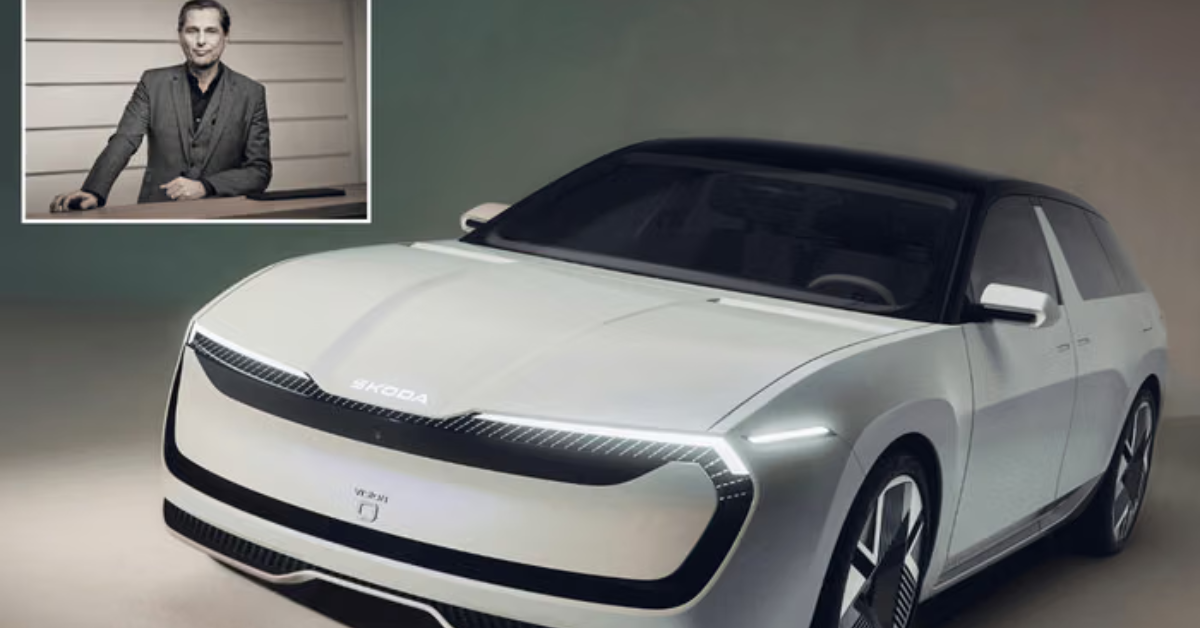As the global automotive industry accelerates towards electrification, manufacturers are exploring innovative solutions to tackle challenges like range anxiety, charging infrastructure, and performance consistency. Skoda, a brand known for blending practicality with European engineering, is reportedly considering introducing a range extender powertrain in the production-spec Vision O.
First showcased as a futuristic concept, the Skoda Vision O demonstrated the company’s vision for next-generation electric mobility. Now, with the possibility of a range extender, the production model could become a game-changer in balancing EV sustainability with real-world usability.
What is the Skoda Vision O?
The Skoda Vision O was originally unveiled as an advanced concept SUV designed to embody the brand’s future mobility philosophy. It showcased:
- A modern, aerodynamic design with sharp lines, bold grille treatment, and LED signature lighting.
- Spacious interiors, leveraging EV architecture with flat floors and optimized cabin space.
- Cutting-edge technology, including autonomous-ready features, digital displays, and connected car tech.
As a concept, it set the tone for Skoda’s upcoming EV lineup under the Volkswagen Group’s electrification umbrella. The production-spec version, however, needs to be more than just futuristic — it must be practical for diverse global markets, especially where charging networks remain underdeveloped.
Understanding the Range Extender Powertrain
A range extender powertrain combines the benefits of electric mobility with the reliability of a backup energy source. Here’s how it works:
- Primary Drive: An electric motor powers the wheels, delivering instant torque and smooth acceleration.
- Battery Pack: Provides the core energy storage for daily driving.
- Range Extender Engine: A small internal combustion engine (usually petrol) acts as a generator to recharge the battery when it’s low, without directly driving the wheels.
This setup ensures that the vehicle never runs out of power completely, addressing the range anxiety issue common in pure battery-electric vehicles (BEVs).
Why Skoda May Opt for a Range Extender
Skoda’s decision to explore this technology isn’t surprising. It aligns with the needs of markets like India, parts of Europe, and developing regions where:
- Charging Infrastructure is Limited: Range extenders bridge the gap until fast-charging stations become widespread.
- Long-Distance Travel is Common: Buyers need reassurance for intercity commutes where charging breaks may be inconvenient.
- Hybrid Solutions Gain Acceptance: Customers transitioning from ICE to EVs often prefer a middle ground.
This approach also positions Skoda against rivals who are experimenting with plug-in hybrids (PHEVs) and range-extended EVs.
Expected Specifications of Skoda Vision O Production Model
While official details remain under wraps, based on industry trends and Volkswagen Group’s technology pool, the Skoda Vision O production version could include:
- Electric Motor: Likely producing 150–250 hp, ensuring smooth city drives and highway capabilities.
- Battery Pack: Estimated range of 300–400 km on pure electric mode.
- Range Extender Engine: A small petrol engine (1.0L or 1.5L TSI) working as a generator to add 200–300 km range.
- Total Effective Range: Around 600–700 km, making it ideal for both daily use and long trips.
This would give the Vision O a strong advantage over pure EVs limited to shorter ranges, especially in emerging markets.
Design and Features to Expect
The production-ready Vision O will likely retain much of the concept’s design DNA but with practical touches. Buyers can expect:
- Exterior Styling: SUV stance, Skoda’s crystalline design language, LED DRLs, flush door handles, and aerodynamic alloy wheels.
- Cabin Space: Flat floor architecture, premium upholstery, large touchscreen infotainment system, and digital driver display.
- Technology:
- ADAS Level 2 or above
- Connected car features
- Wireless Android Auto/Apple CarPlay
- Voice assistant integration
- Safety: Multiple airbags, 360-degree camera, ABS with EBD, electronic stability control, and advanced driver monitoring.
Competitors in the Market
If the production-spec Skoda Vision O launches with a range extender, it would sit in an interesting niche. Competitors may include:
- MG ZS EV (and future range-extended models)
- Hyundai Kona Electric
- Tata Curvv EV (expected in 2025)
- BYD Atto 3
- Toyota hybrid SUVs (though not true range extenders, they target the same audience)
By offering extended practicality, the Vision O could attract both EV enthusiasts and skeptical first-time adopters.
Benefits for Buyers
- No Range Anxiety: The petrol-powered generator ensures longer journeys without worrying about charging stops.
- Lower Running Costs: Daily city commutes can be handled on pure EV mode, minimizing fuel consumption.
- Eco-Friendly Transition: Supports greener mobility without forcing users to depend solely on EV infrastructure.
- High Resale Value: Buyers may trust hybridized solutions more than pure EVs in evolving markets.
Challenges and Considerations
While promising, range extender powertrains also face hurdles:
- Higher Costs: Adding a small ICE engine and generator raises production costs.
- Maintenance Needs: More complex than a pure EV due to the hybrid system.
- Regulatory Policies: Some markets may favor pure EVs with incentives, reducing the appeal of hybrids or range extenders.
Skoda will need to strike the right balance between affordability and advanced technology to ensure strong market acceptance.
Market Impact
The production-spec Skoda Vision O with a range extender could be a strategic model for markets like India, Southeast Asia, and parts of Europe. It has the potential to:
- Expand Skoda’s EV portfolio beyond the Enyaq iV.
- Compete strongly with hybrid SUVs and mid-range EVs.
- Serve as a bridge technology until fast-charging infrastructure matures globally.
Conclusion
The possible introduction of a range extender powertrain in the production-spec Skoda Vision O underscores the brand’s commitment to innovation and adaptability. By offering a blend of electric efficiency and ICE backup, Skoda aims to make EV ownership more practical and less stressful for buyers in markets where infrastructure challenges still exist.
If launched with the expected specs and pricing, the Vision O could redefine Skoda’s role in the EV transition, appealing to both eco-conscious buyers and those seeking reliability on long journeys.
In short, the Vision O might just become the perfect stepping stone between today’s ICE vehicles and tomorrow’s all-electric future.
